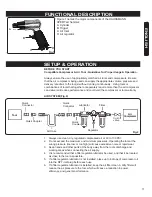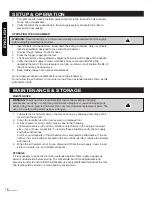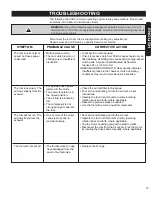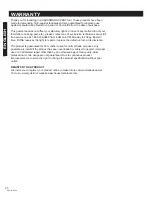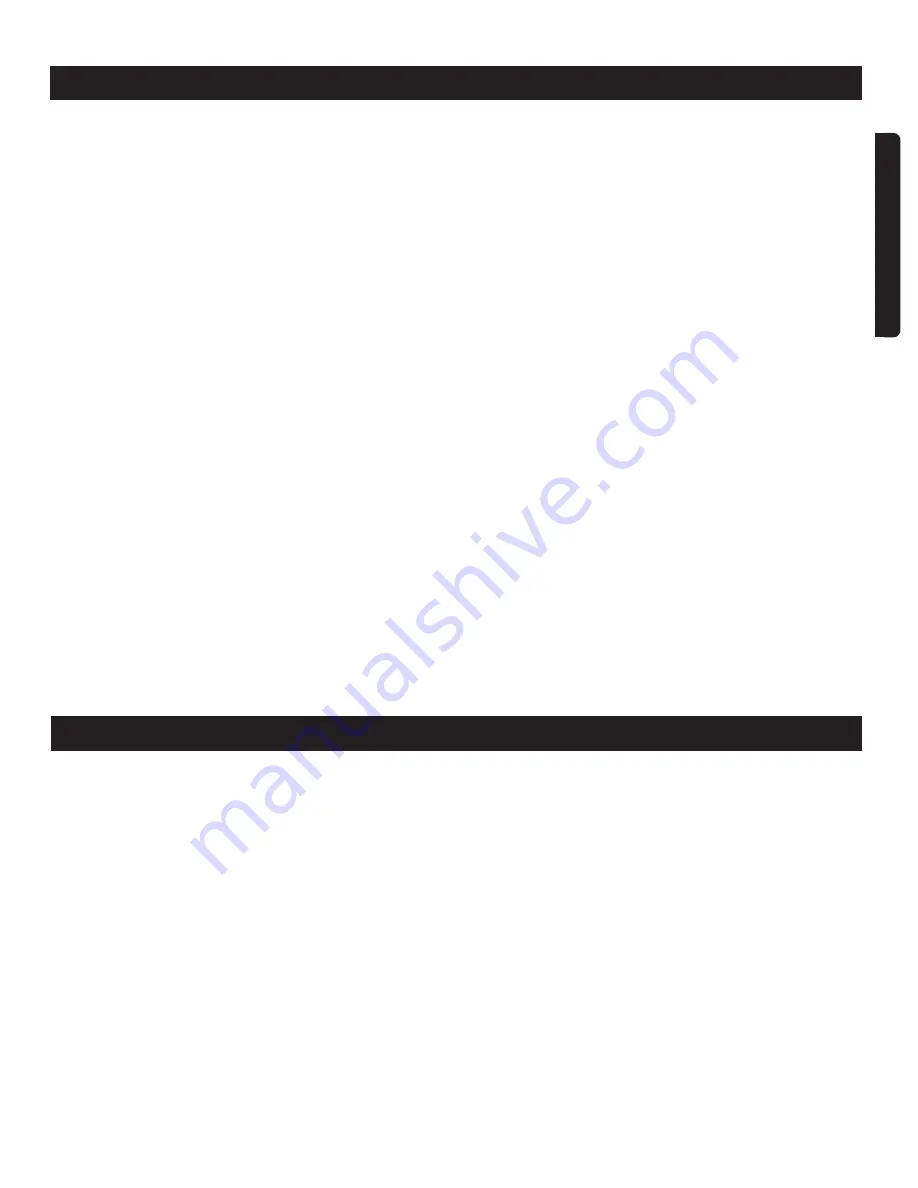
15
ENGLISH
ADDITIONAL SAFETY INSTRUCTIONS FOR THE AIR-POWERED HAMMER
GENERAL SAFETY INSTRUCTIONS
Check for misalignment or binding of moving parts, breakage of parts, and any
other condition that may affect the tool’s operation. If damaged, have the tool
serviced before using. Many accidents are caused by poorly maintained tools.
Use only accessories that are recommended by the manufacturer for your model.
Accessories that may be suitable for one tool may become hazardous when used
on another tool.
SERVICE
Tool service must be performed only by qualified repair personnel.
When servicing a tool, use only identical replacement parts. Use only authorized
parts.
Use only the lubricants supplied with the tool and specified by the manufacturer.
AIR SUPPLY AND CONNECTIONS
The air supply connection must not hold pressure when air supply is disconnected.
If an incorrect fitting is used, the tool can remain charged with air after
disconnecting and thus will be able to work even after the air line is disconnected,
possibly causing injury.
Do not use any type of reactive gases, including, but not limited to, oxygen and
combustible gases, as a air source. Use filtered, lubricated, regulated compressed
air only. Use of a reactive gas instead of compressed air may cause the tool to
explode which will cause death or serious personal injury.
Use only a pressure-regulated compressed air source to limit the air pressure
supplied to the tool. The regulated pressure must not exceed 100 PSI. If the
regulator fails, the pressure delivered to the tool must not exceed 200 PSI. The
tool could explode which will cause death or serious personal injury.
Always disconnect air supply from tool:
a) before making adjustments.
b) when servicing the tool.
c) when clearing a jam.
d) when tool is not in use.
e) when moving to a different work area, as accidental actuation may occur,
causing injury.
Inspect the air-powered hammer prior to each use in order to:
a) ensure that the proper power source is being used;
b) verify that the tool is in proper working order.
Do not use a tool that is not in proper working order.
Do not use oxygen or any other combustible or bottled gas to power this tool.
Do not use this tool in the presence of flammable liquids or gases.
Only use accessories that are specifically designed for use with this tool.
Drain the air tank daily. Water in the air line will damage the air-powered hammer
Clean the air inlet filter weekly.
The pressure in the line should be increased in order to compensate for an
unusually long air hose (longer than 26’ [8 m]). The diameter of the hose should
be 3/8” (10 mm) ID.
Keep the hose away from heat, oil, and sharp edges. Check the hose for wear,
and verify that all connections are secure.

















